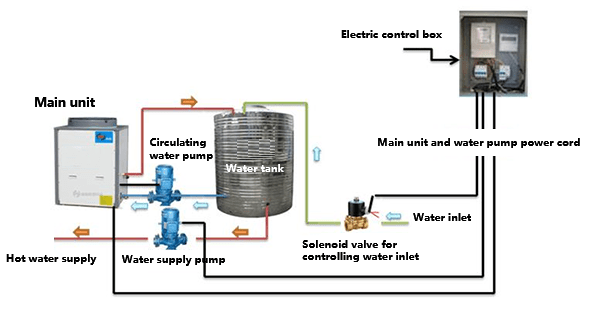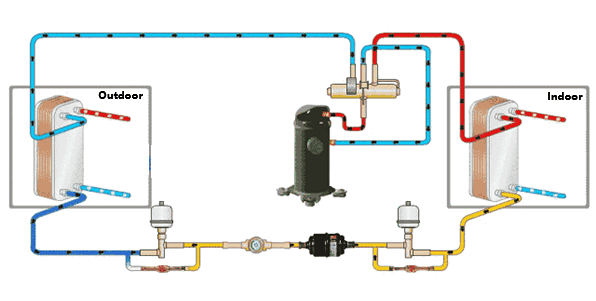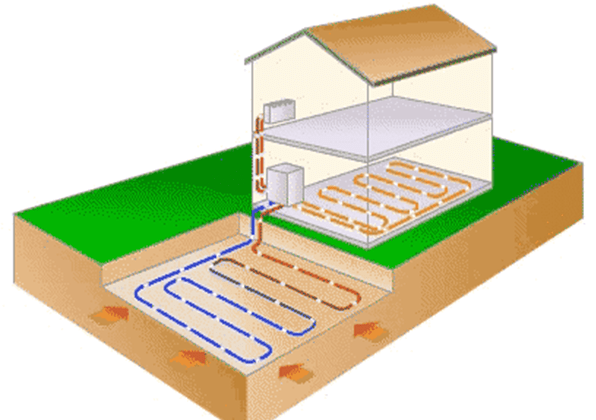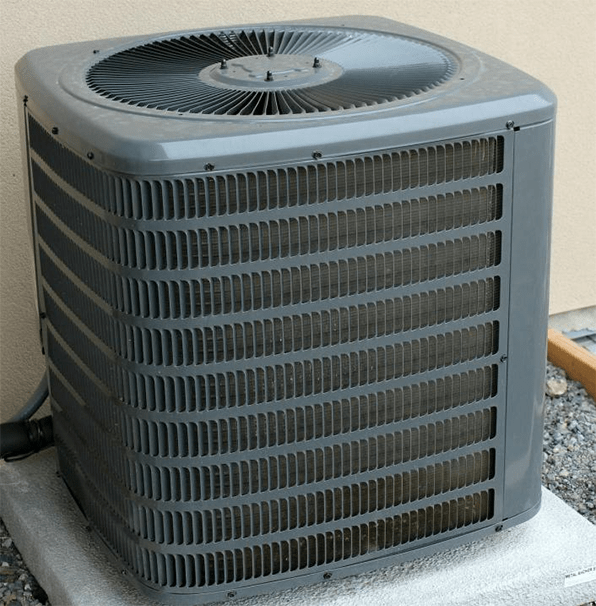
Figure 1: Heat pump units.
Heat pumps are a popular choice for both heating and cooling homes and buildings. They are energy-efficient and environmentally friendly, making them a great option for those who want to reduce their carbon footprint and save money on their energy bills.
In this article, we'll cover everything you need to know about heat pumps, from how they work to their pros and cons, and more.
1. What is a Heat Pump?
A heat pump is a type of heating system that uses electricity to transfer heat from one place to another. Unlike a furnace or boiler, which creates heat by burning fuel, a heat pump simply moves existing heat from one location to another. Heat pumps can be used for both heating and cooling, making them a versatile option for many homes.

Figure 2: Heat pump diagram.
1.1 Main Parts of Heat Pumps
Compression heat pumps consist of several main parts that work together to transfer heat from one location to another. The main parts of a heat pump include:
â— Compressor: The compressor is the heart of the heat pump. It receives refrigerant in a low-pressure gaseous state and compresses it into a high-pressure gas.
â— Evaporator: The evaporator is where the refrigerant absorbs heat. It is typically located outside the building, where it can extract heat from the outdoor air, ground, or water source.
â— Condenser: The condenser is where the refrigerant releases heat. It is typically located inside the building, where it can transfer heat to the indoor air.
â— Expansion Valve: The expansion valve is responsible for reducing the pressure of the refrigerant and expanding it into a low-pressure liquid.
â— Refrigerant: Refrigerant is a substance that moves through the heat pump, absorbing and releasing heat as it flows through the different parts of the system.
â— Air Handler: The air handler is responsible for distributing the heated or cooled air throughout the building.
â— Thermostat: The thermostat is the device that controls the temperature of the building. It communicates with the heat pump to turn it on or off, depending on the desired temperature.

Figure 3: Heat pump thermostat wiring diagram.
1.2 Heat Pump Wiring Diagram

Figure 4: Heat pump wiring diagram.
2. How Does a Heat Pump Work?
Heat pumps work by using refrigerants to absorb and release heat. The refrigerant is compressed into a high-pressure gas, which then flows through the coils of the evaporator, absorbing heat from the outdoor air, ground, or water source.
The refrigerant then flows into the compressor, where it is compressed into a high-pressure gas. As the gas flows through the coils of the condenser, it releases heat, which is transferred to the indoor space.

Figure 5: Heat pump system diagram for heating.

Figure 6: Heat pump system diagram for cooling.
3. Types of Heat Pumps
There are several types of heat pumps available, each designed for specific applications. Here are some of the most common types:
â— Air-source heat pumps: These heat pumps extract heat from the outdoor air and transfer it indoors to heat a building or hot water. They are the most common type of heat pump and can be used in a wide range of climates.

Figure 7: Air source heat pump diagram.
â— Ground-source (geothermal) heat pumps: These heat pumps extract heat from the ground or water and transfer it indoors to heat a building or hot water. They are more efficient than air-source heat pumps but are typically more expensive to install.

Figure 8: Ground-source heat pump diagram.
â— Water-source heat pumps: These heat pumps extract heat from a nearby body of water, such as a lake or river, and transfer it indoors to heat a building or hot water. They are highly efficient but require access to a nearby water source.

Figure 9: Water source heat pump system diagram.
â— Hybrid heat pumps: These heat pumps combine a traditional furnace with an air-source heat pump to provide both heating and cooling. They are useful in areas with extreme temperatures.
4. Pros and Cons of Heat Pumps
Like any heating and cooling system, heat pumps have their pros and cons.
4.1 Pros
Energy Efficiency: Heat pumps are highly energy-efficient, since they transfer heat rather than generating it. This can result in significant cost savings on energy bills.
Versatility: Heat pumps can provide both heating and cooling, making them a versatile option for year-round comfort.
Environmentally Friendly: Heat pumps are an environmentally friendly option for heating and cooling. Because they use less energy, they produce fewer greenhouse gas emissions, which can help reduce your carbon footprint.
Durability: Heat pumps are designed to last for many years, with an average lifespan of 15-20 years.

Figure 10: The energy saving of the heat pump.
4.2 Cons
Upfront Cost: Heat pumps can be more expensive to install than traditional heating and cooling systems. However, the long-term savings on energy bills can offset this initial cost.
Climate Dependence: Heat pumps are most effective in moderate climates where temperatures don't typically drop below freezing. In colder climates, supplemental heating may be needed to provide adequate warmth.
Noise: Heat pumps can be noisy, particularly when the compressor is running. However, newer models are designed to be quieter than older models.
Maintenance: Like all heating and cooling systems, heat pumps require regular maintenance to ensure they are functioning properly. This can include cleaning the coils, changing filters, and checking refrigerant levels.
5. Choosing the Right Heat Pump
When choosing a heat pump, there are several factors to consider:
â— Size - The size of your heat pump will depend on the size of your home and the climate in your area. A professional installer can help you choose the right size for your needs.
â— Efficiency - Look for a heat pump with a high SEER (Seasonal Energy Efficiency Ratio) and HSPF (Heating Seasonal Performance Factor) rating. These ratings indicate how efficient the unit is.
â— Type - There are three main types of heat pumps: air-source, ground-source, and ductless mini-split. Each has its own pros and cons, so it's important to choose the right type for your needs.
â— Brand - Choose a reputable brand with a good warranty and customer support. This will ensure that you get the most out of your investment.

Figure 11: Heat pump unit.
6. Heat Pump Installation and Maintenance
If you're considering a heat pump for your home or building, it's important to have it installed and maintained by a professional. A qualified technician can help you choose the right size and type of heat pump for your needs, and ensure that it is installed correctly. Regular maintenance is also important to keep your heat pump functioning properly and to prevent costly repairs.
Related Info
Are Window Heat Pumps Efficient? (Window Heat Pump: Everything You Need to Know)What are the Pros and Cons of Heat Pumps
Pros and Cons of Heat Pump vs Gas Furnace: Which is Better for Your Home?
Heat Pump Not Working in Cold Weather: Causes and Solutions
How Does a Heat Pump Work in Winter?


